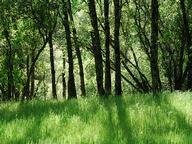Quiz Answer Key and Fun Facts
1. Which of the following statements about the dragon blood tree is true?
2. Which of the following is usually listed as the longest living tree?
3. The Fouquieria columnaris is commonly known as a Boojum tree and derives its name from which of the following things?
4. Often seen growing in swamps of the American deep south, what is the name of the woody protuberances found growing underneath many Cypress trees?
5. Strangler figs are a type of epiphytic tree.
6. The loblolly pine is one of the fastest growing trees in the world.
7. Although you might think this tree is native to The Netherlands, the tulip tree actually originates on which continent?
8. The tsuga is a conifer which is usually found in which of the following areas?
9. Found in many parts of the African continent, the baobab tree is often known by which nickname?
10. If I told you I had an Acer saccharum growing in my front yard, what beautiful tree would you expect to see?
Source: Author
dcpddc478
This quiz was reviewed by FunTrivia editor
rossian before going online.
Any errors found in FunTrivia content are routinely corrected through our feedback system.

